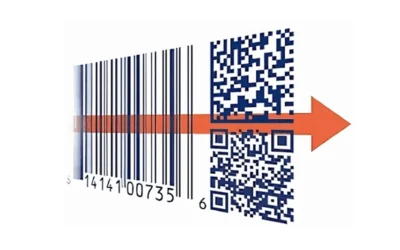RFID technology has many advantages. Among key benefits is the enabling of more accurate and more frequent inventory cycles while utilizing less labor. Traditionally, inventory counts have been performed in one of two ways: by manual counts with pen and paper or by barcode, scanning individual items. The traditional methods of inventory are labor intensive, inaccurate, and limit regular inventory cycles of more than once or twice per year.
The first step to implement RFID inventory is to add a RFID label to each item. With traditional inventory systems, items are labeled with either a serialized barcode or static barcode that represents a particular part number. With the addition of the RFID label, every part or aspect of a product can receive a unique identifier, for example part number plus a serial number along with other associated attributes.
Once inventory has established the RFID label, companies eliminate the need for line of sight barcode scanning and the need to touch every individual object in order to count it. Utilizing RFID in inventory enables us to count many objects at once, without line of sight and as individual objects with unique ID’s.
As per a new report titled “Measuring the impact of RFID in retailing key lessons from 10-case study companies”, published by the University of Leicester, 10 European retailers using RFID technology in their businesses have shown impressive results. RFID not only increased the sales in the stores but also improved accuracy of storage (from 65-75% accurate inventory to 93-99% with RFID technology).
The typical RFID inventory is performed in one of two ways. The first method utilizes the traditional cycle count method, whereby a user will perform an inventory utilizing a Mobile RFID Reader to count objects in inventory. This type inventory can be performed as a raw count or as a verification where inventory can be taken against a known or expected count to help identify inaccuracies. The second method of RFID inventory is based on a Perpetual Inventory System, whereby a company uses fixed RFID Readers and Antennas to maintain an “always on” method that is constantly counting the flow of inventory without the need for human intervention. Perpetual Inventory Systems may be designed to monitor select areas where product is stored or to monitor product as it flows through the traditional supply chain mechanisms of receiving, manufacturing, shipping, and point of sale.
In addition to reduced labor costs, inventory accuracy, and more frequent inventory cycles, utilizing RFID in inventory ensures that you have the right product in the right place at the right time, increasing accounting accuracy, visibility, and inventory turn. MSM Solutions PortalTrack software easily enables RFID inventory functions as either stand-alone applications or by integrating counts into existing ERP or WMS systems. Whether you are counting at the item, case, or pallet level, MSM Solutions can tailor both the hardware and software requirements to meet your individual needs. PortalTrack software is trusted by the world’s leading brands. It’s deployed globally and monitors millions of RFID events per day.



